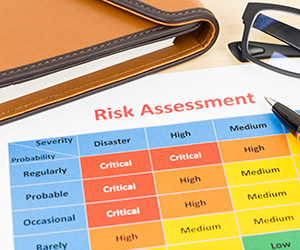
The Project Management Institute (PMI) defines a portfolio as a collection of projects, programs, subsidiary portfolios, and operations managed as a group to achieve strategic objectives. Portfolio Management, then, is the discipline of managing this portfolio to achieve organizational goals.
The components of the portfolio can be projects, programs (series of projects managed jointly) or even other portfolios. They can also have operational components, that is, ongoing maintenance of an asset that has no defined end point. This is one of the main differences between portfolios and programs.
Portfolios exist to achieve organizational goals, and they have a life cycle that involve Initiation, Planning, Execution, Optimization and Monitoring & Controlling.
The PMI defines Project Portfolio Management in terms of the following 6 Performance Domains:
- Portfolio Strategic Management
- Portfolio Governance
- Portfolio Capacity and Capability Management
- Portfolio Stakeholder Engagement
- Portfolio Value Management
- Portfolio Risk Management
Portfolio Strategic Management
 Since the primary goal of a portfolio is to achieve organizational objectives, corporate strategy is the foundational cornerstone. It establishes what the organization is trying to accomplish and how it will accomplish it.
Since the primary goal of a portfolio is to achieve organizational objectives, corporate strategy is the foundational cornerstone. It establishes what the organization is trying to accomplish and how it will accomplish it.
Typically, a portfolio strategic plan includes:
- Vision statement
An aspirational statement that articulates what the organization would like to achieve. The vision statement is forward looking and articulates how the company sees its role in the future state of the industry or world. - Mission statement
A document that declares the purpose of an organization and how it serves its customers. Mission statements are more focused on the present than Vision Statements are, as they articulate what the organization is doing to fulfill its customer’s needs. - A description of the organization’s long term portfolio goals and objectives
Strategic goals and objectives fall into a wide spectrum, for example:-
- Capturing a bigger market share
- Entering a new market
- Improving employee training
- Complying with a regulatory requirement
- Improving profitability
- Increasing efficiency
- Providing better customer service
- Improving customer satisfaction
Strategic goals must conform to the vision and mission of the organization. They should be feasible, that is, although there is always some risk involved in moving from point A to point B, the risk conforms to the risk tolerance of the company. They should be measurable and verifiable to ensure they are being achieved. And finally, they need to be adaptable and flexible as organizational requirements evolve.
-
- The means by which the organization plans to achieve those general goals and objectives
The portfolio components each have an objective, whether to introduce new products and services, business models, or capabilities to the organization, or to open new markets and sales channels.
The Portfolio Charter formally authorizes the portfolio and gives the portfolio manager the authority to apply organizational resources to it. It summarizes the corporate goals the portfolio is aiming to achieve and the strategies it will use to achieve them.
The Portfolio Manager must identify the most important components of the portfolio and continually optimize the portfolio’s component projects to maximize the strategic goals of the portfolio.
Portfolio Governance
Governance involves setting decision making criteria – who is allowed to make decisions and what the boundaries of those decisions are. For project portfolio management, those decisions are concerned with the portfolio components:
- Who can decide which components will be added, changed, or removed?
- Who decides how much money each component is allocated?
- What procedures and checks need to be implemented before those decisions can be finalized?
- What information needs to be passed up to those decision makers, how, when, and by whom?
Portfolio governance must be aligned with organizational culture. The Portfolio Sponsor is one level above the Portfolio Manager and usually acts in a budget setting and/or project champion role within the organization.
Portfolio Capacity and Capability Management
The Portfolio Manager must supervise both Capacity and Capability:
- Capacity is the resources needed to achieve the portfolio’s objectives, how many are needed, what types, and when.
- Capability is the skills, competencies, and attributes associated with the resources. It represents what the organization can and cannot do.
The resources are allocated to the various components of the portfolio, but if not centrally managed, could lead to inefficiencies as one component requires a resource that another has in excess capacity. Resource availability varies with time, as does the demand for the resources, hence the portfolio must monitor and control resource usage and availability to the overall benefit of the portfolio.
Most portfolios seek to fill a capability gap related to some product, service, or organizational capability. Hence, they require some form of capability development to accomplish their goals, that is, additional expertise, relationships, or leadership skills. This capability development must be balanced with capacity.
Portfolio Stakeholder Engagement
 Hardly any projects, programs, or portfolios exist in isolation. Anyone who has an interest (whether positive or negative) is a stakeholder, and ensuring their needs are met is paramount to the success of the portfolio. The stakeholder engagement process is similar across all three disciplines:
Hardly any projects, programs, or portfolios exist in isolation. Anyone who has an interest (whether positive or negative) is a stakeholder, and ensuring their needs are met is paramount to the success of the portfolio. The stakeholder engagement process is similar across all three disciplines:
- Stakeholder identification determines who the stakeholders are.
- Stakeholder analysis seeks to clarify their interest in, and power to affect, the attainment of the goals of the portfolio
- Stakeholder engagement planning determines how stakeholders should be engaged to fulfil the goals of the portfolio.
- Stakeholder engagement performs the activities that obtain stakeholder buy-in (or reports back that project changes are required).
Stakeholders can be executives, sponsors, other project or portfolio managers, customers, suppliers, regulatory bodies, adjacent landowners, or anyone else that has any interest in the portfolio or can impact its success.
Portfolio Value Management
All portfolios exist to create value, whether measured in monetary or non-monetary terms. The organization has decided to invest the funds to carry out the portfolio and the value created must be measured and assessed against the risk undertaken to create it. Specifically, the portfolio manager must:
- Ensure that investments in portfolio components are aligned with the organization’s strategy and governance practices
- Balance the portfolio value against overall risks
Any one portfolio component must not necessarily produce value. For example, if a new product’s documentation doesn’t end up getting used by its end users, but the product itself is a success, the risk of producing that documentation might still have been worth the investment given the knowledge available at the time.
Portfolio managers seek to negotiate the expected value in advance, maximize the return on investment in the portfolio, and measure the performance to assess if the expected value is being realized.
Portfolio Risk Management
 Since every portfolio component involves an investment, as a minimum there is always a risk that the component does not achieve its objectives. Hence, risk management is an inescapable part of a portfolio manager’s job.
Since every portfolio component involves an investment, as a minimum there is always a risk that the component does not achieve its objectives. Hence, risk management is an inescapable part of a portfolio manager’s job.
But every component does not necessarily need to succeed. Rather, the goal of portfolio management is to have the entire portfolio succeed, not every individual component. For this reason, the portfolio manager’s biggest concern is that the risk profiles of each component are balanced to provide a risk/reward profile that’s appropriate for the portfolio and the risk appetite of the organization undertaking it.
More specifically, the strategic goals identified in the first of these six performance domains must provide an amount of value at a risk tolerance that is acceptable to the stakeholders.
Risk has two underlying components:
- Likelihood
If an event has a good chance of happening, it warrants mitigative action. - Consequences
If an event creates a large disruption, it warrants mitigative action.
The risk is considered to be a component of both:
Risk management involves the following three steps:
- Risk Identification seeks to discern the most important risks to the portfolio and/or project.
- Risk Analysis quantifies the two underlying variables, likelihood and consequences, and seeks to determine the overall risk to the project and/or portfolio.
- Risk Response identifies proactive as well as reactive steps that will be taken to mitigate the risk.
Risk events don’t have to be negative. Positive threats are called opportunities, and portfolio management should seek to track and respond to opportunities as well as threats.
Portfolio Management Examples
- A state department of transportation (DOT) manages a portfolio of highway paving projects. Each project is not related to the others, but together they achieve the state’s strategic objective of maintaining the highway network. Management of the portfolio is centralized to align with the strategic objective, and each project’s funding is dependent on the other projects, that is, the priority level of the various projects are assessed relative to each other.
- An airport wishes to upgrade its software systems to streamline its operations. A project for the air traffic control software is initiated, followed by the software for check-in and baggage handling. Simultaneous to these projects, another project upgrades the software for facilities and asset management. The projects are managed from a central office, but since these projects are not related it is a portfolio, not a program.
- A non-profit organization holds fundraising campaigns. This year, they plan on holding ten events in ten cities. Each event requires several months of planning, facility rental, food, and speaker fees. The event organizer is a paid staff member and an event planning consultant is usually engaged as well. Each event is a project which is part of a fundraising portfolio. The portfolio achieves the objective of raising sufficient funds in all of the locations where the organization does business.











Leave a Reply